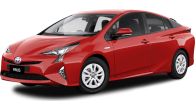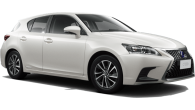The Toyota Yaris finds itself in a precarious position in the Australian market.
This new-generation car launches as the decline of small cars in Australia seems to be in full swing, and while it brings hybrid tech to the Yaris nameplate, it’s priced dangerously close to its popular Corolla big sibling.
So, what’s on offer here to justify the relatively high price, and should you consider the top-spec ZR hybrid model tested here or is the value further down the pecking order? Keep reading to find out.
Toyota Yaris 2022: ZR Hybrid
| Engine Type | Inline 3, 1.5L |
|---|---|
| Fuel Type | Unleaded Petrol/Electric |
| Fuel Efficiency | 3.3L/100km (combined) |
| Seating | 5 |
| Price From | $31,680 - $38,170 |
| Safety Rating |
|
Does it represent good value for the price? What features does it come with?
The price is the most eyebrow raising element of the new Yaris range. The ZR hybrid we’re looking at here wears an MSRP of $32,200.
That’s not a typo, this new Yaris ZR (at least in hybrid form) is nearly $10,000 more than the previous top-spec ZR auto (which, at the time of its discontinuation, wore an MSRP of $22,670).
How can this possibly be? The Yaris is a huge step forward for the nameplate. It has been merged onto Toyota’s latest TNGA-B architecture, brings with it brand-new engines and a brand-new hybrid system, as well as unprecedented safety inclusions, which all add to its price compared to its comparatively rudimentary predecessor.
The problem is, at $32,200, it sits dangerously close to the larger and critically acclaimed Corolla ZR hybrid ($34,695) which I had the pleasure of testing as a long-termer (spoiler: it was good).
.jpg)
It seems, then, the only argument for the Yaris ZR hybrid, at least on the value front, is if you want all the features and convenience of the Corolla in an even more convenient-for-the-city package.
Standard equipment at the ZR level includes 16-inch alloy wheels, full LED headlights with LED tail-lights, a 7.0-inch multimedia touchscreen with wired Apple CarPlay and Android Auto connectivity, a digital instrument cluster with a 4.2-inch information display, single-zone climate control, keyless entry and push-start ignition, leather accented steering wheel, and improved soft-touch trims on the inside with a ZR-specific cloth seat upholstery.
.jpg)
This all looks and feels very nice for a small car in this category. However, there are reminders of its small car limitations, in the form of a manual handbrake, hard plastic door cards, and lack of amenities for rear passengers.
Does the extra stuff in this car make it worth considering over a similarly-priced Corolla variant? I say no. You would have to be sold on the size and shape of the new Yaris to make it a worthwhile jump into something smaller with fewer creature comforts.
Is there anything interesting about its design?
The Yaris has improved out of sight compared to its predecessor. It still adheres to Toyota’s loosely defined and, at times, schizophrenic design language which gives each of its passenger cars from the Corolla to the Camry a unique look. But I think there are some more subtle traits which make the Yaris a fun little car to gaze upon.
.jpg)
Its blacked-out grille, bubbly haunches and cute roofline give it a playful vibe with a hint of sportiness which relate it to its go-fast GR spin-off, while the ZR specific black contrast elements on the roof and wheels give it a more upmarket look than some of its rivals.
.jpg)
I particularly like the way the panel work has been shaped to give it a more finely-crafted look than the plain expanses of metal on of some of its more affordable rivals, like the Kia Rio or MG3.
Inside looks contemporary, and has some interesting elements, but some sources of disappointment too.
.jpg)
The wheel is a highlight. Leather-clad on this grade, it feels the part, and I like its compact finish and switchgear toggles. The funky digital dash elements are neat, as are the weird cut-outs on the dash which is a common design motif used elsewhere in Toyota’s range.
It adds up to a fun interior theme, but the materials leave a lot to be desired. Hard plastics clad the doors and lower three quarters of the dash, hardly nice places to rest your elbows and knees, and the door has a fill panel with a bizarre furry cardboard texture.
The seats are a semi-bucket style in the ZR with a comfy cloth, but it is disappointing to see no hard-wearing leather trim at this price.
While the ergonomics are pretty good for the multimedia and climate functions, the 7.0-inch screen used here is starting to look and feel old compared to slicker designs seen in the Kia Rio or VW Polo.
How practical is the space inside?
The Yaris is a city car, so much of its practicality promise is in its tight dimensions which let you dart about tight city streets and make the most of accursed street-side parking locations.
When it comes to the inside though, is it any good? For front passengers, things aren’t bad, but they aren’t great either.
There’s a large bottle holder in the doors, which surprisingly holds a 1.25-litre water bottle, a square bay under the climate unit where the 12V and USB ports live, two more bottle holders in the centre console, an odd, raised bay above the climate controls, and a small glove box.
It is strange there’s no centre console armrest box, and no, unlike the Mazda2, you can’t option one as an accessory. Why? There’s a centre airbag (contributing to the car's impressive maximum five-star ANCAP safety rating) which needs the space to deploy. Unfortunate.
The little storage nooks under and over the climate unit are also a little inconvenient because the surface is a hard plastic. Hard acceleration or cornering will cause objects to slip free very easily. I also found I was frequently running out of space for things on my week with the car.
Rear passenger space is limited in the little Yaris, with doors which don’t open far and a descending roofline leaving taller humans with little headroom.
.jpg)
Legroom is a slightly better story, perhaps owing to this car’s extra length over its predecessor, but still not great. Seat comfort, however, is above par for the segment, with nice, contoured trim and comfy padding.
Unfortunately, this does not extend to the doors, which trade out the furry cardboard stuff for a solid plastic piece. Aside from some medium-sized (think 600ml) pockets in the doors, rear passengers don’t score any amenities like power outlets or adjustable air vents either.
Boot space comes in at 270-litres (VDA). Average for the city-car segment, but in my experience just enough to hold a weekend's worth of gear for a couple.
It will fit either the largest CarsGuide case (124L) on its own, or the two smaller ones with a bit of jiggery-pokery, but certainly not all three.
What are the key stats for the engine and transmission?
Hybrid versions of the Yaris ship with one of Toyota’s latest inventions, a 1.5-litre three-cylinder non-turbo engine running on the more efficient (but less powerful) Atkinson cycle.
.jpg)
The engine produces just 67kW/120Nm but is supported by an electric motor on the front axle, producing 59kW/141Nm.
The combined output with both working in tandem is an about-right-for-the-segment 85kW. Drive is sent to the front wheels via Toyota’s signature CVT automatic, while the electric drive components source their power from a lithium-ion battery pack, as opposed to the old-style nickel-hydride pack in the equivalent Corolla.
How much fuel does it consume?
Toyota’s long history of easy, efficient hybrid systems is on full show here, and it makes so much sense for the little Yaris.
Fuel consumption on the combined cycle is officially rated at 2.8L/100km, and after my weekly test the ZR returned a computer-reported fuel figure of 3.9L/100km.
While that’s not quite on the money compared to the claim, no segment rival will come anywhere close to that average.
My testing also involved more freeway driving than is perhaps intended for this drivetrain, which, with its electric features, is more suited to stop-start traffic.
A bonus for the back pocket (but perhaps not the environment, this engine is still only Euro 5 complaint) the Yaris ZR hybrid is able to run on entry-level 91RON fuel.
It has a 36-litre fuel tank, which using our real-world fuel figure, equates to a range of more than 900km.
Warranty & Safety Rating
What safety equipment is fitted? What safety rating?
The Yaris has perhaps the most impressive safety suite of any car in this class.
It features the latest items from Toyota’s active array, including auto emergency braking, which works at up to 180km/h and detects pedestrians even at night-time. It also bundles in a new intersection assist feature alongside lane keep assist with lane departure warning and adaptive cruise control.
Specific to the ZR grade is blind spot monitoring, low-speed auto braking for parking, and a clearance sensor.
The standard array of six airbags (dual front, side and curtain) makes an appearance, with the new centre airbag (which deploys between the front seats) a key contributor to the car's five-star ANCAP rating, which the Yaris range was awarded in 2020.
The Yaris also sports dual ISOFIX and three top-tether child seat mounting points, and a space-saver spare wheel under the boot floor.
What does it cost to own? What warranty is offered?
Like all Toyotas, the Yaris range is covered by a five-year and unlimited kilometre warranty which is extendable to seven years on the condition the car is serviced on time at an authorised Toyota service location.
The battery is covered by an industry-leading 10-year and unlimited kilometre warranty, and the Yaris’ service pricing is capped at an astounding $195 per annual (or 15,000km) visit for the first five services.
What's it like to drive around town?
Sure, the Yaris is pricey and well specified, but it punches above its weight on the road, too. Put simply, it outclasses nearly all the competition when it comes to the city car segment.
This is a car with a new sense of poise, and an almost upmarket drive feel courtesy of its new underpinnings, which adhere to Toyota’s New Generation Architecture philosophy.
The ride is gentle but controlled, and the steering feels connected but sophisticated, not sharing the simpler feel of rivals like the Kia Rio or Suzuki Swift.
Put this car into a few corners and it is fun, too. The level of control is admirable, and inspires confidence, even if the hybrid drivetrain isn’t quite as engaging as some of the turbocharged competition.
While it might lack that kind of punch, it is very smooth for about 90 per cent of driving scenarios. Toyota has proven it is the master of seamless hybridisation, and the Yaris continues that trend.
Like all Toyota hybrids, the Yaris splits its acceleration profile into three sections, fully electric, combustion assisted, and then a power band, which uses primarily the combustion engine, but for max output requires an electrified boost.
If you’re not paying attention, it's hard to tell when the car switches between these modes, making ease of operation its primary attribute.
But if you care enough to optimise your economy the car provides with neat, easy-to-understand graphics on the digital centre display.
An added bonus is the fact that this tech in the lighter Yaris hatch seems to get more use out of the electric drive (saving more fuel) than it does in its heavier Yaris Cross SUV sibling.
The only downside for both cars is under heavy acceleration the signature gruff thrum of a three-cylinder engine can break the ambiance, particularly when you need the power to overtake or climb a hill.
It is relatively quiet for a car in this segment, and the fuel consumption speaks for itself, with our Yaris reporting some 40 – 50 per cent of driving time spent purely electric.
In terms of the competition? As mentioned, it provides less of the raw engagement on offer from turbocharged versions of the Suzuki Swift, Kia Rio, or Volkswagen Polo, but can only count the Polo as a rival when it comes to refinement.
Verdict
It’s such a shame this Yaris is so expensive because for a city car it's a benchmark-setter. It’s the only hatch in this class to offer a hybrid drivetrain and such trim fuel consumption, while also offering the refinement and safety of vehicles only found a full segment up.
Pricing Guides


.jpg)

_0.jpg)
.jpg)
.jpg)
.jpg)
_0.jpg)
.jpg)
.jpg)
.jpg)

.jpg)
.jpg)
.jpg)
.jpg)
.jpg)
.jpg)
.jpg)
.jpg)
.jpg)
.jpg)
.jpg)
 (1).jpg)
.jpg)





























.jpg)
.jpg)
.jpg)

.jpg)

